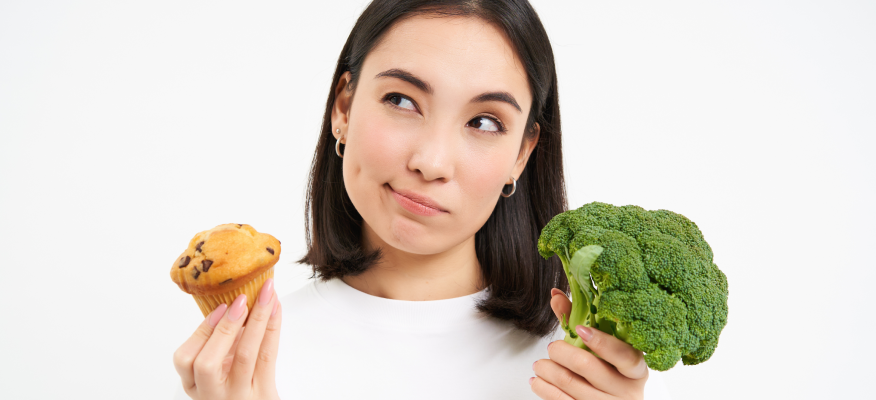The link between nutrition and menstrual health is often underestimated. However, the foods we eat play a significant role in managing menstrual symptoms and balancing hormones. A nutrient-rich diet can alleviate common discomforts like bloating, cramps, and mood swings while also supporting overall menstrual health. With the right guidance, a balanced diet can be your ally in navigating your cycle with ease.
Understanding the Connection Between Nutrition and Menstrual Health
The menstrual cycle is governed by a complex interplay of hormones, and the foods we consume can directly influence their balance. Nutrition is not only important for energy but also for regulating the hormonal fluctuations that occur throughout the cycle. For example, inadequate nutrition can lead to irregular periods or increased menstrual discomfort. On the other hand, a well-balanced diet can help promote more consistent cycles, alleviate common symptoms, and support long-term reproductive health.
Certain nutrients are especially important during different phases of the cycle. For instance, magnesium helps to reduce cramping during menstruation, while B-vitamins can improve mood and energy levels throughout the cycle. Iron is essential, as blood loss during menstruation can lead to lower iron levels, which could contribute to fatigue. By understanding how each phase of the cycle responds to food intake, you can tailor your diet to optimize your menstrual health.
Essential Nutrients for Menstrual Health
Certain vitamins and minerals are critical when it comes to maintaining hormonal balance and alleviating menstrual discomfort. Magnesium, for example, is often recommended to reduce cramping and bloating during menstruation. Foods rich in magnesium include leafy greens, nuts, seeds, and legumes. Another important nutrient is vitamin B6, which can help reduce mood swings and irritability associated with PMS. You can find B6 in foods like bananas, potatoes, and chickpeas.
Iron is a key mineral to address, as menstruation can cause blood loss, leading to iron deficiency. Red meat, poultry, and plant-based sources like lentils and spinach can help replenish iron stores. In addition, omega-3 fatty acids are known to have anti-inflammatory properties and can help reduce period pain. Fatty fish, walnuts, and flaxseeds are excellent sources of omega-3s and should be incorporated into a menstrual health-focused diet. By ensuring these nutrients are part of your regular meals, you’ll be better equipped to manage menstrual symptoms and support your overall health.
Foods to Include for Hormonal Balance
Maintaining hormonal balance through your menstrual cycle requires a consistent supply of specific nutrients. Whole foods like leafy greens, nuts, seeds, and fatty fish should be prioritized. These foods provide an array of vitamins, minerals, and healthy fats that help regulate hormones and support the body through its various cycles. Leafy greens, such as kale and spinach, are rich in magnesium, which can help with cramps and mood regulation. Healthy fats from sources like avocado and nuts also support hormone production and reduce inflammation.
Fiber-rich foods also play an important role. Fiber helps maintain a healthy digestive system and can help regulate estrogen levels. Whole grains, vegetables, fruits, and legumes are fantastic sources of fiber. These foods help manage weight and balance blood sugar levels, which are crucial for hormonal health. By including a variety of these foods in your diet, you’ll support hormone balance, reduce inflammation, and boost overall menstrual health.
Foods to Avoid for Menstrual Health
While some foods support menstrual health, others can exacerbate symptoms. Processed foods, refined sugars, and caffeine can contribute to bloating, irritability, and fatigue. Processed foods often contain excess sodium, which can lead to water retention and worsen bloating during menstruation. Reducing your intake of these foods can help mitigate some of the discomforts of your period.
Caffeine can also increase anxiety and disrupt sleep, which may make PMS symptoms feel more intense. High-sugar foods can cause blood sugar spikes and crashes, leading to mood swings and fatigue. It’s important to reduce or eliminate these foods from your diet, especially during the luteal and menstrual phases, when your body is more sensitive to hormonal fluctuations. By focusing on whole, unprocessed foods, you can help stabilize your hormones and manage symptoms more effectively.
The Role of Hydration in Menstrual Health
Staying hydrated is crucial for overall health, and it plays a particularly important role during menstruation. Dehydration can exacerbate bloating, fatigue, and headaches, which are common symptoms during your period. Proper hydration supports digestion, reduces bloating, and helps your body regulate temperature and blood flow.
Water is the best way to hydrate, but consuming foods with high water content can also be beneficial. Cucumbers, watermelon, and oranges are all great sources of water that can help maintain hydration levels. Herbal teas, such as peppermint or ginger tea, can also be soothing and help with digestion and bloating. A well-hydrated body is better equipped to handle the stresses and physical demands of menstruation, so make hydration a priority throughout your cycle.
Meal Planning for Menstrual Health
Meal planning is a key component of guided nutrition for menstrual health. By understanding the nutritional needs of each phase of the menstrual cycle, you can create meals that support your body’s unique needs. During the follicular phase (the first half of the cycle), focus on incorporating protein-rich foods and fiber to support energy levels and balance blood sugar. This is the time to add lean meats, legumes, and whole grains to your diet.
As you move into the luteal phase (the second half of the cycle), your body’s needs shift. Your metabolism increases, and you may experience cravings for comfort foods. Instead of giving in to junk food cravings, focus on healthy, filling options like complex carbohydrates, nuts, and seeds. These foods help stabilize blood sugar and provide the necessary nutrients to maintain hormonal balance. During your menstrual phase, focus on replenishing lost iron with foods like red meat, beans, and spinach while continuing to hydrate.
Supplements to Support Menstrual Health
While a balanced diet should be your primary source of nutrients, supplements can also play a role in supporting menstrual health. Magnesium supplements are often recommended for those who experience severe cramps or fatigue during menstruation. Vitamin B6 can help alleviate mood swings and irritability, and omega-3 supplements may help reduce inflammation and pain.
Evening primrose oil is another supplement commonly used to help alleviate PMS symptoms, particularly breast tenderness and mood swings. While supplements can be helpful, they should complement a healthy diet, not replace it. It’s important to consult with a healthcare professional before adding supplements to your routine to ensure they’re appropriate for your specific needs.
Practical Tips for Guided Nutrition During Menstruation
Incorporating guided nutrition into your daily routine doesn’t have to be complicated. Start by focusing on whole, nutrient-dense foods that support your menstrual health. Meal prepping at the start of the week can make it easier to stick to your nutritional goals, even when life gets busy. Simple meals like grain bowls with leafy greens, vegetables, and lean protein can be easy to prepare and packed with nutrients.
Additionally, snack on foods like almonds, pumpkin seeds, or Greek yogurt to keep your energy levels steady throughout the day. Don’t be afraid to experiment with new recipes that incorporate foods known to support menstrual health, such as chia pudding or salmon with a side of quinoa and roasted vegetables. The key is consistency—by making nutrient-rich foods a regular part of your diet, you’ll see improvements in your menstrual health over time.
FAQ
Q: What foods help with PMS symptoms? A: Foods rich in magnesium, omega-3 fatty acids, and fiber can help alleviate PMS symptoms like bloating, mood swings, and cramps. Leafy greens, fish, and whole grains are excellent choices.
Q: How can I prevent bloating during my period? A: Staying hydrated, reducing salt intake, and eating fiber-rich foods can help reduce bloating and water retention. Foods like cucumbers and watermelon can also help with hydration and bloating.
Q: Should I avoid dairy during menstruation? A: Some women find that dairy worsens menstrual cramps and bloating. It’s helpful to track your body’s reaction to dairy to see if it affects you during your period.
Q: Can supplements replace a balanced diet for menstrual health? A: Supplements can help support a healthy diet but should not replace it. Whole foods provide the most comprehensive nutritional benefits, so focus on eating a balanced diet alongside any supplements you may need.
By focusing on guided nutrition for menstrual health, you can better manage your cycle and feel empowered by the foods you choose to fuel your body. With a mix of proper hydration, nutrient-dense foods, and mindful eating habits, you can reduce the impact of symptoms and enhance your overall well-being during menstruation.




